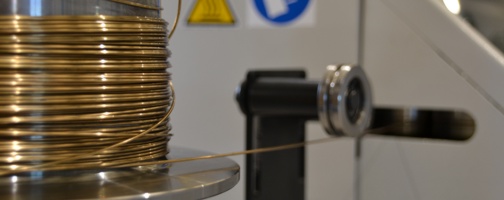Metal processing can take place using various techniques: some are very similar to each other, and often the advantages of specific applications are not known.
Knowing the differences between the many techniques should not be taken for granted: for example, in what way do cold rolling and cold drawing differ? Is it better to use drawn metals or rolled metals? What are the mechanical differences between cold rolled products and metal drawn products?
In this article we aim to clarify the main aspects of the most common metal processing technologies in the industry, by analyzing the differences between cold rolling and cold drawing.
What is metal drawing?
Cold drawing is a process involving the plastic deformation of metals, capable of changing the shape of a material by inserting a smaller piece through a hole or cross-section matrix.
The metal drawing process is based on two fundamental principles: metal ductility and traction force. These two characteristics allow the material to stretch and deform inside the drawing machine, until it reaches the required shape and cross-section.
Metal is drawn cold at ambient temperature, and hardened, thus improving its physical and mechanical properties. A drawn bar or wire has precise tolerances as a result of the passing through calibrated matrices called dies (hard metal parts with a hole whose diameter is smaller than that of the metal).
What is cold rolling?
Metal rolling is another mechanical machining process used to shape or resize the cross-section of a metal. Similar to forming, the deformation is achieved using cold rolling mills with rollers that rotate in opposite directions.
Modern cold rolling machines have many advantages:
- A series of multi-cage operations capable of uniformly deforming the metal, improving the structural and mechanical characteristics of the semi-finished product,
- An increased control of the process, given the possibility to manage the tension of the metal during the various work phases and solve the problems caused by the drawing pull;
- Easy processing of metals which are difficult to draw, thus replacing cold drawing in complex operations while maintaining the same level of precision (special steels, welding wire, etc.).
Comparing metal rolling and drawing
Let’s compare the differences between a cold drawn or a cold rolled metal: for example, the metal wire processing obtained by casting, which can be performed by means of:
- Metal drawing, in a traction process to stretch and pull the wire;
- Metal rolling, in a compression process to deform the wire.
In both cases, the cross-section of the metallic wire will be reduced and lengthened accordingly.
In the first case, the wire passes through a drawing mold, which only alters its surface; in fact, cold drawing does not make it possible to eliminate any casting defects, causing a lack of homogeneity in the crystalline grain on the inside and on the surface of the wire.
In the second case, the wire is compressed into a series of paired rollers, which deform the structure evenly through several cycles, improving its mechanical properties. In addition, cold rolling helps to eliminate internal defects such as blow holes and porosity.
In short, metal rolled and drawn products have similar characteristics in terms of dimensional tolerances and surface finishes; but working with a cold rolling machine makes it possible to achieve a more compact, homogeneous and impurity-free product, with improved mechanical specifications and higher tensile, bending and torsion resistance.
Here below a comparison chart featuring the two processing techniques, to summarize the main differences between cold drawing and cold rolling.
| Metal drawing | Cold rolling | |
| Mechanical force | Traction | Compression |
| Shaping | Drawing mold | Milling rolls |
| Temperature | Cold | Hot / Cold |
| Crystalline grain | Not homogeneous | Homogeneous |
| Materials | Steel, copper, nickel, aluminum, alloys | Industrial, precious, hard, ferrous and non-ferrous metals, bimetals, alloys and special metals |
| Additional in-line processing | Annealing, cutting | Annealing, shaping, inner cord insertion, finishing, cutting |
| Products | Rods, wires, pipes | Metal plates, tubes, strips, rods, hollow wire and precious wire, welding wire, cord wire |
INVIMEC: expertise in cold rolling mills
Unlike metal drawing, we can see that nowadays cold rolling is a multi-purpose, state-of-the-art solution for metal processing operations.
In fact, while in the past, cold drawing processes exceeded hot rolling in terms of quality, the introduction of cold metal rolling and the development of increasingly high-performance cold rolling mills has resulted in an exceptionally viable alternative to drawing.
Specialized in industrial and jewelry sectors, Invimec boasts many years of experience in the design and construction of cold rolling and roll forming machines, to process generic and specific semi-finished products for small and medium-sized production.
We are able to deliver the most suitable solution for the processing of metal wires, profiles, strips, pipes and for the production of rolling cylinders and rollers. Put us to the test – contact us here so we can discuss your project together!
